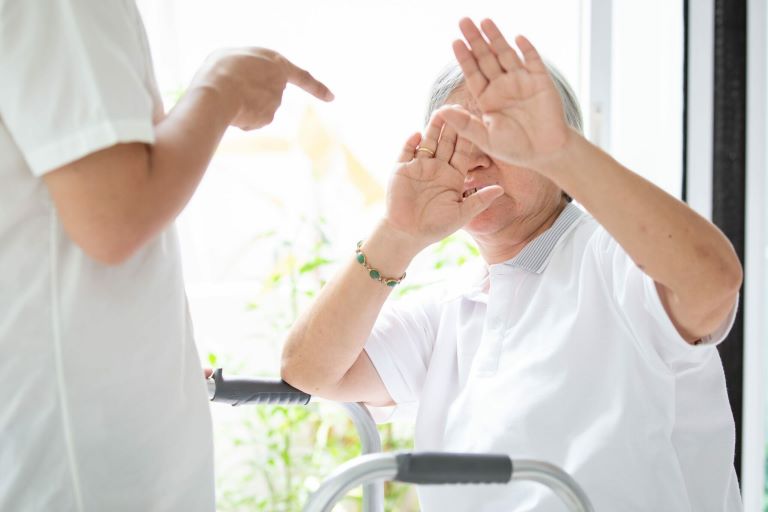
A care home can severely disrupt a person’s life. In California, several services are available to assist clients in recovering damages and ending the mistreatment. The first move is to notify the California Department of Aging about the abuse. Following this first move, bringing an elder abuse claim against the nursing care institution may bring the elderly some justice.
Who can help file a claim for the elderly
The California Elder Abuse and Dependent Adult Civil Protection Act (EADACPA) seeks to protect elderly and dependent adults against harm. While the state can pursue criminal abuse proceedings against care homes, victims of maltreatment who have experienced legal harm can also launch a civil complaint. In most circumstances, the real victim of abuse must bring a civil responsibility lawsuit.
What Does the Statutes of California Dictate?
The state of California outlines how persons can take legal action if another person causes an elder’s suffering or discomfort. Any individual 65 years of age or greater is considered an elder for the purposes of this provision. There are representatives of the elderly that can help them seek legal justice in case of any abuse. Some of the representees that can help the elderly include:
A senior who is personally abused may file a complaint with an elder abuse lawyer. Sometimes the older cannot do it correctly or without help and needs the support of those close to them to file a claim.
Spouses can also launch cases once their partners are abused. Even if partners do not suit directly, they might be crucial actors in an elder assault case since they may have observed the injury first-hand owing to their closeness to their spouses.
Can Family Members witnessing elder abuse file a claim?
Family members of the senior with power of attorney or who witnessed the mistreatment may also file an elder abuse claim. This is one of the most prevalent methods that people bring elder abuse claims, as the old are frequently incapable of doing so. The abuser’s potential limitation of movement, incapacity to utilize current technical gadgets, and an impediment to communication make it difficult for elders to bring cases independently.
If the senior has passed away as a result of the mistreatment, the elder’s heirs can launch an elder abuse case against the person who caused the elder injury. This is frequently someone’s offspring, but it may also include others who may acquire the elder’s inheritance, such as grandkids.
Filling the elder abuse case
A complainant must normally show three factors in order to initiate a case against nursing facilities or its personnel. The three factors include:
- If the abused person was at least 65 years old or qualified as a “reliant adult” under the EADACPA;
- That the complainant was abused by the accused; and
- That the individual suffered harm as a result of the mistreatment.
The processes outlined below are taken once the victim and their lawyer decide they fulfill all the requirements to initiate a lawsuit.
Seek Appropriate Evidence
Some sorts of evidence that victims frequently assemble to bolster their claim include:
- police statements and any mistreatment reports that have been made;
- Records demonstrating the victim’s past health history;
- documentation describing the victim’s present medical condition and their past medical history;
- medical costs showing abuse therapy;
- witness accounts; and
- Pictures or videos of the assault occurring
A victim’s lawsuit will be strengthened by credible evidence, which will also help to develop the weight of proof required for a successful lawsuit.
File in court
The elder abuse lawyer will formulate the claim in a lawsuit and submit it to the appropriate court. The names of all parties to the lawsuit are listed in the complaint, along with the evidence you intend to use to prove your case. It will also specify how much money a sufferer is seeking in recompense. The compensations can include:
- Medical expenses spent as a result of the neglect or maltreatment;
- The price of therapy as a result of the maltreatment or negligence;
- The victim’s removal from the custody of the nursing home resulted in financial damages;
- Anguish and pain; and
- Legal expenses and associated expenditures.
Going to court
The Elder abuse lawyer may write the complainant a demand letter following the court’s approval of the lawsuit to settle before trial. The victim’s counsel will appear in court and present proof to back up the victim’s allegations of nursing home abuse or negligence if the case does not resolve before trial. The length of an elder abuse claim will depend on the circumstances and the violations. But in every case, a skilled lawyer for victims of nursing home mistreatment will strive to achieve the best possible result. The California Penal Code Section 368 is a wobbler, which means that based on the circumstances and accusations in the case, the prosecutor may elect to prosecute it as either a crime.
The Bottom Line
Understanding the elder abuse laws can be complex, so it’s important to have an experienced attorney on your side if you are involved in a case of elder abuse. An attorney can help you understand the law and navigate through the complicated system. Furthermore, a competent lawyer can advise you on the best way to protect yourself and your loved ones. If you are the victim of elder abuse, don’t hesitate to reach out for help.
* The articles provided on the Stalwart Law website are for informational purposes only and are not intended to be used as professional legal advice or as a substitute for legal consultation with a qualified attorney.
